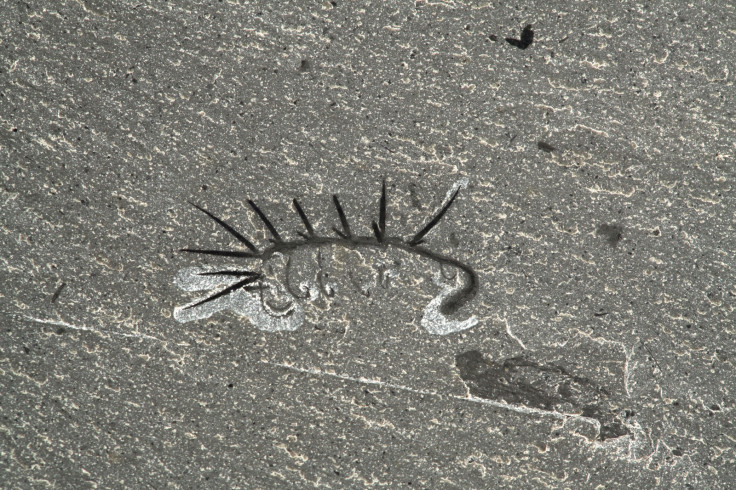Hallucigenia: Half a billion-year-old worm had legs, spikes and sucker throat lined with teeth
A worm-like creature that lived half a billion years ago had spikes, several pairs of legs, a pair of eyes and a throat lined with teeth, experts have announced.
Hallucigenia had previously been described by scientists but because its tail and head were so similar they did not know the finer details about the enigmatic creature.
Now, an international team with scientists from University of Cambridge, the Royal Ontario Museum and the University of Toronto have been able to reconstruct the 508 million-year-old animal.
They were able to re-describe the species after a new fossil was found in the Burgess Shale of Canada.
The scientists, publishing their findings in the journal Nature, say Hallucigenia sparsa was the common ancestor to velvet worms and a member of the ecdysozoans – a massive group of animals including arthropods, velvet worms and water bears.
"The early evolutionary history of this huge group is pretty much uncharted," said Martin Smith, the paper's lead author. "While we know that the animals in this group are united by the fact that they moult, we haven't been able to find many physical characteristics that unite them."

Hallucigenia's weird mouth arrangement allowed scientists to establish velvet worms once had the same characteristics but they eventually lost it through evolution.
Study author Jean-Bernard Caron said: "It turns out that the ancestors of moulting animals were much more anatomically advanced than we ever could have imagined: ring-like, plate-bearing worms with an armoured throat and a mouth surrounded by spines. We previously thought that neither velvet worms nor their ancestors had teeth. But Hallucigenia tells us that actually, velvet worm ancestors had them and living forms just lost their teeth over time."
Hallucigenia emerged during the Cambrian Explosion – a period when most major animal groups first emerged on Earth. It was first identified in the 1970s but baffled scientists. At first it was reconstructed upside down, backwards, with spikes for legs and its head mistaken for its tail.
Smith said: "Prior to our study, there was still some uncertainty as to which end of the animal represented the head, and which the tail. A large balloon-like orb at one end of the specimen was originally thought to be the head, but we can now demonstrate that this actually wasn't part of the body at all, but a dark stain representing decay fluids or gut contents that oozed out as the animal was flattened during burial."
By finding the tail, scientists could then work out what its head was. "When we put the fossils in the electron microscope, we were initially hoping that we might find eyes, and were astonished when we also found the teeth smiling back at us," Caron said.
Hallucigenia probably created suction with its mouth by flexing in and out to suck food into its throat. The teeth likely kept the food from slipping out when it sucked some more, the scientists added.
© Copyright IBTimes 2025. All rights reserved.






















